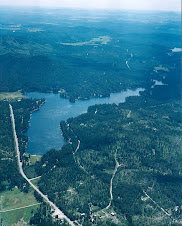Clerical error kept lake on federal listing for 11 years
By Youssef Sleiman
Of The Miner
OLYMPIA – The way that people perceive Sacheen Lake’s water may begin to change after the state’s Department of Ecology dropped the lake from a federal list of polluted water bodies in February this year.
“Basically, Sacheen Lake was listed erroneously in 1998,” DOE spokeswoman Jani Gilbert said.
The 303(d) list compiles all of the impaired water bodies, and in 1998, Sacheen Lake was added to the list. However, 11 years later, water quality specialist Ken Koch discovered a clerical error that led to the lake’s listing in the first place.
Sacheen Lake had hits against it for total phosphorous and fecal coliform, which are bacteria left from animal waste and failing septic systems. When water quality assessments were written again in 2004 and 2008, Sacheen Lake appeared on the 303(d) listing again.
What Koch discovered in February was that the 2002 and 2004 listings were only based on the 1998 listing.
And the final listing decision for Sacheen Lake in 1998 was “No.”
“Yet the listing was erroneously added to the 1998 list,” Koch wrote to The Miner. “In the process of completing the 2002/2004 listing cycle, this listing was still on the list and since there was no new data, the listing was simply brought forward to the 2004 list. The error was finally caught and the listing inactivated.”
Both the 1998 final listing decisions for total phosphorous and fecal coliform stated “no,” but the lake received the spot on the list anyway and held it for about 11 years.
Sacheen Lake Sewer and Water District managing secretary Sheila Pearman said that when the sewer district first discovered the lake had been listed as an impaired water body, the board questioned it. However, to get off of the list, Pearman said, the district would have to spend more funds to “renew” the lake. At the same time, the district was counseled that the impairment listing could also bring in more grant funds for lake cleanup projects.
“In the past, that may have been true,” Pearman said, “But anymore, there’s hardly any grant funds left.”
As far as Pearman knows, the district did not receive any grant funds based on the listing.
Since the district also did not spend any funds to try and get off the 303(d) list or receive funds from being on the list, the listing had a net zero effect on the district’s balance sheet.
“The biggest impact may be on how people perceive the lake’s water quality,” Pearman said, adding that some residents, after hearing about the 303(d) listing, wouldn’t swim in the lake.
The only active mark against Sacheen Lake remains the aquatic invasive species listing, caused by Eurasian watermilfoil.
The ecology department did note the existence of an Active Phase II State Clean Lakes Restoration Project at Sacheen Lake. The project performed watershed nutrient management (to manage nutrients such as phosphorus), septic tank elimination, lake level regulation, public education and control measures on aquatic herbicides.
“So yes, the people are right. Sacheen Lake was on the 1998 and the 2004 lists, but erroneously so,” Koch wrote.
Sacheen Lake wasn’t the only lake to receive a reprieve from the state’s ecology department. Another total phosphorous sampling hit against Sacheen Lake came from a 1981 float-equipped helicopter recon of the lake. The helicopter would land, take a sample, and then DOE would use the sample for pollution determinations. The results were collected in a 1985 study, informally called a Sumioka and Dion study.
“It was later decided that a single sample event is not justification for a 303(d) listing,” Koch said. “If the Sumioka and Dion information was the only information we had on any particular lake, the listing was inactivated. Many lake listings were inactivated. This happened with Sacheen Lake.”
This listing was dropped from Sacheen Lake in 2006.
The fecal coliform and total phosphorus listings, inactivated Feb. 4, came from a 1991 Phase I restoration project, by Kennedy Engineers. The data was submitted to the ecology department in hard copy only. Seven years later, the department recommended against listing Sacheen Lake on the 303(d) list, but the lake appeared on it anyway. The department is waiting for the U.S. Environmental Protection Agency to approve the 2008 list before changes are made and a new category assigned to Sacheen Lake.
